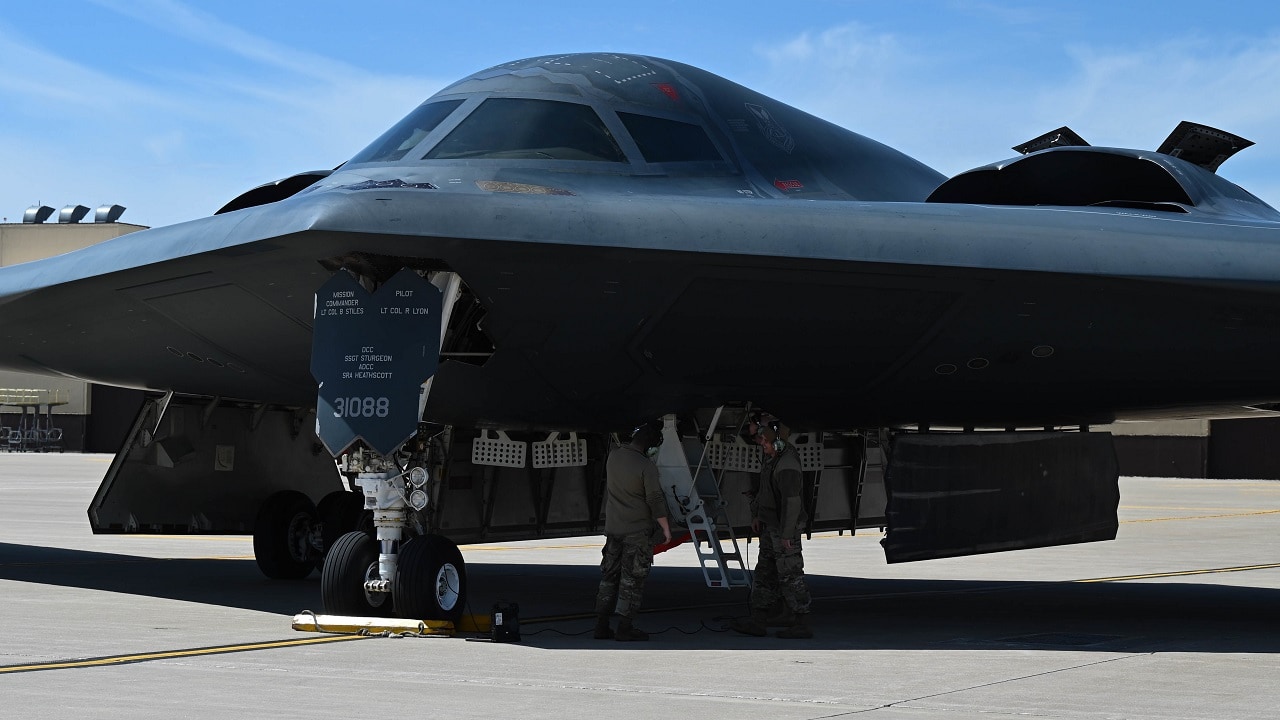The decision years ago to truncate the United States Air Force fleet of B-2 bombers to 20 arguably had a lasting and somewhat damaging impact on the Air Force, as the service has been operating with a bomber deficit for many years.
The end of the Cold War led decision-makers to massively scale back a planned fleet of 75 B-2s to 20, which seemed to compromise the US Air Force’s ability to project large-scale stealth bombing power in any great power conflict.
A larger force of B-2s would have operated as a stronger deterrent against a great power adversary, given that large numbers of bombers are required to form an offensive envelope over a major adversary, destroy air defenses, and open up a safer air corridor for 4th and 5th-generation bombers to attack.
A significant air attack campaign against an advanced great power adversary would require a large mass of attacking bombers spread across a wide combat envelope to exact a needed effect. Russia and China are vast countries with many air defenses dispersed throughout their territory, protecting vital assets.
An initial high-altitude bombing strike would need to cover a wide area to disable any dispersed, yet increasingly interconnected network of air defenses to ensure effectiveness in establishing air superiority.
Not Enough B-2 Bombers
While the B-2 has been and continues to be an extremely advanced and uniquely capable stealth bomber, Sun Tzu’s famous “mass matters” concept is still highly relevant today as the US seeks to deter major rivals with a large force and a “peace through strength” approach to national security.
Simply put, more B-2s would have been much better in recent decades. They would still be highly relevant today, particularly as the Air Force waits for numbers of B-21s to arrive and faces significant threats from China and Russia.
For decades, the Air Force has been clear that its Combatant Commander demand for bombers exceeds the available supply, and before the arrival of the B-21, the service had not built a new platform in many years. Over the years, this reality has led many critics, observers, and former service members to express concern that the Air Force operated a “geriatric” force.
The service has shown that its B-52 and B-1B bombers can be massively upgraded to maintain relevance and remain effective for decades beyond their intended service life, as both airplanes are almost entirely different platforms than they were at their inception.
Today’s B-2s are more than 30 years old, yet amazingly, the platform has remained relevant and dominant beyond its anticipated service life due to very successful modernization efforts.
Today’s B-2 flies with a 1,000-fold faster computer processor, sensors able to alert crews of the location of enemy air defenses called the Defensive Management System, a vastly expanded arsenal, digital cockpit upgrades, and reconfigured weapons interfaces and fire control.
The B-2 has been integrated with a broader and more advanced arsenal of weapons, making it increasingly capable of destroying extremely difficult-to-reach targets. Its stealth properties have also likely been maintained and upgraded with new thermal management technologies or radar-absorbent materials.
B-2 Upgrades
These B-2 upgrades have been extremely important, given that Chinese and Russian air defenses are reportedly modernized to detect even some stealth, able to operate on a wider range of frequencies, and leverage high-speed computer processing and digital networking.
The US Air Force B-2 bombers have performed quite well in a number of conflicts over many years, including the war in Afghanistan following 9-11, Libya, and others. Many Pentagon and government leaders have lamented and, in some cases, regretted canceling the planned B-2 fleet.
The key question moving forward for the B-2 is that, now that it has been modernized to remain effective for many more years, how effectively will it network with the arriving fleet of B-21s? The Air Force plans a large fleet of B-21s totaling at least 100, yet it will take many years before they arrive in large numbers.
Therefore, as the B-21 arrives, it must interoperate effectively with the B-2 through effective networking technologies, sensing, data exchange, and targeting coordination.
About the Author: Kris Osborn
Kris Osborn is Military Technology Editor of 19FortyFive and the President of Warrior Maven – Center for Military Modernization. Osborn previously served at the Pentagon as a highly qualified expert in the Office of the Assistant Secretary of the Army—Acquisition, Logistics & Technology. Osborn has also worked as an anchor and on-air military specialist at national TV networks. He has appeared as a guest military expert on Fox News, MSNBC, The Military Channel, and The History Channel. He also has a Masters Degree in Comparative Literature from Columbia University.

